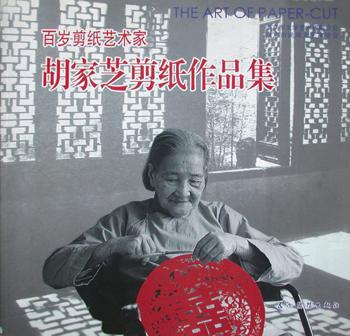Paper-cut Artist Works Wonders
2009-05-28ByLouYiceng
By Lou Yiceng


I went through a collection of paper-cut masterpieces by 113-year-old female folk artist Hu Jiazhi during the days celebrating the 60th anniversary of New China. The amazing master is from Tonglu, a picturesque rural county of Hangzhou. Her father was an outstanding calligrapher in the county and her uncle was a painter.
The album contains her masterpieces created over the past five decades. The artist has enjoyed a 100-year-long career. The paper designs she created in her earlier life were mainly for local celebrations such as weddings, birthday parties, and local festivals. They were all gifts and creations of momentary importance and were not meant as artworks for collectors. All of them are long gone. So her paper-cuts in the collection are all dated after 1952, the year when she moved from Tonglu to Nanjing and settled down there.
New China enabled the artist to see a lot of things she had never seen back in rural Tonglu. Her art adapted to the new.
In 1955, the artist created a paper-cut artwork celebrating the friendship between Soviet Union and China and called for peace. Another few artworks created around the time also celebrate the theme of peace.
The artworks in this collection reflect her attention to big themes over the decades. One was created in 1959 in celebration of the 10th anniversary of the New China. Another was done in 1961 in honor of the 40th anniversary of the CPC. Prosperity is one of her big themes. In the 1960s, Hu created quite a few paper-cuts depicting her wishes to the nations prosperity. “Universal Celebration” in 1997 marks the return of Hong Kong. “Welcome Home” in 1999 celebrates the return of Macao. The square and the octagon in the pattern stand for a Chinese phrase meaning all over, indicating the people all over the motherland welcome Macao home. In 2008, the 112-year-old artist made a large piece for the Beijing Olympic Games despite her seriously deteriorating sight. It took her several months to design and make it. Experts think this masterpiece reflects a perfect combination of south and north schools. They admire her technical and artistic mastery.
As a folk artist, Hu never forgets the primary value and function of her art. Many in the collection were created for her family and her friends. In 1983, she created “All New Again” in celebration of the launch of the nationwide modernization drive. It was actually meant for her second son, a scientist. 1983 also witnessed her third son come back from the military and begin to work as a civilian. His mother also created a paper-cut to mark this milestone event in the family. Some in the album were meant for health, longevity and happiness of her friends. “Health and Happiness”, created in 2000, is meant for her five children, for the five sons and daughters were all retired that year.
The 100-year career seems to suggest that her art is all about celebrations of the nation and happy occasions of other people. But her art can also be about herself. In 1995, she created “Centennial Jubilee” to mark her own 100th birthday. It is a masterpiece of symbol, metaphor, and homophony.
Her ties with her hometown Tonglu are always there. 1989 marked the 40th anniversary of the liberation of Tonglu. In order to express her gratitude to the Tonglu County Government for its assistance in helping publish an album of her paper-cut masterpieces, she created “Hometown Green Forever”, a special paper-cut gift for Tonglu. She gave Tonglu a few hundred copies of the album and part of her original paper-cuts. Today, paper-cutting is seeing a renaissance in Tonglu. The county has many artists engaged in this folk art. Now the county has a paper-cutting art museum and Hu is its honorary curator.
Her artistic achievement has caught the attention of Wang Bomin, a professor and art historian with the China Academy of Art based in Hangzhou and editor of “A History of Folk Paper-cuts of China”, the first of its kind in the history of China. In 2006, he held an exhibition of Hus best paper-cuttings in her honor in Tonglu. □
